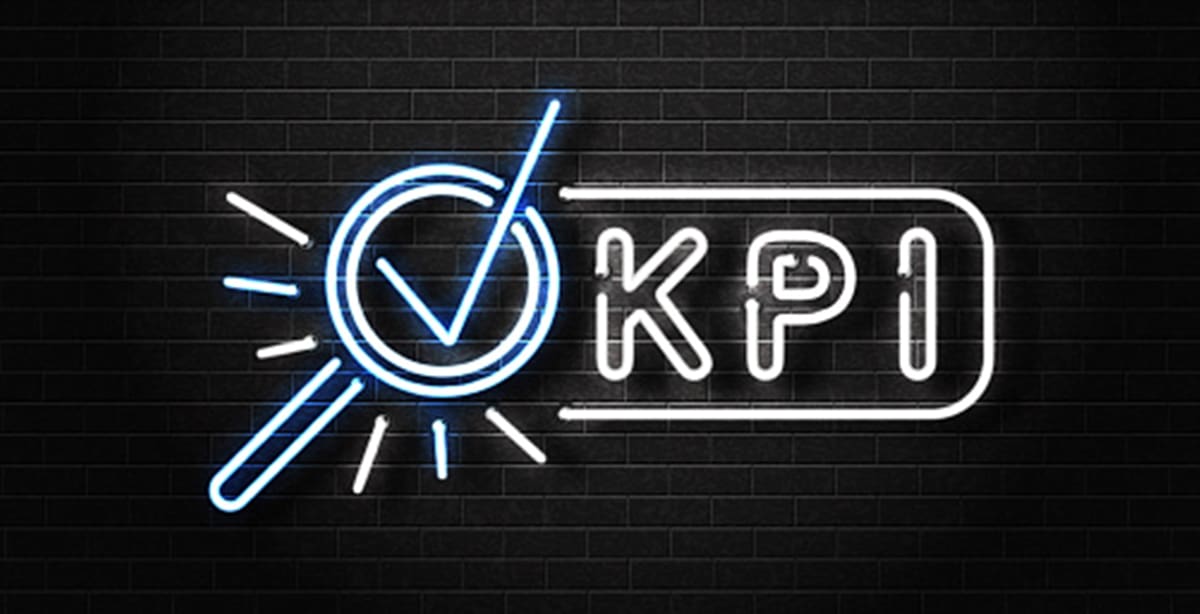For a marketing campaign to reach its full potential and become as effective as possible, concrete ways to qualify and quantify successes and failures must be put into place. The primary benefits of employing such campaign measuring sticks is that they enable campaign administrators to ramp up ta
ctics that are proving successful and, when tactics aren’t reaching their goals, to modify or eliminate them.
In the marketing world, these benchmarks are known as KPIs — Key Performance Indicators — and they can vary greatly from campaign to campaign based on priorities and goals. They can be especially beneficial with online marketing campaigns, as the very nature of digital campaigns allows for KPIs to be precisely measured and tracked every step of the way, offering marketers a range of figures and insights regarding campaign performance that simply weren’t available to their predecessors. Here, we’ll examine a number of the top KPIs for online marketing campaigns, and discuss the insights they can offer to campaign coordinators. Please note, though, that the most effective KPIs will vary from campaign to campaign and from industry to industry — the ideal KPIs for each specific marketing campaign should be determined on a case-by-case basis.
The keys to success
How can your brand tell whether or not an online marketing campaign is doing its job? While the bottom line is the ultimate measure, keeping your eyes on and optimizing a number of contributing factors can help you reach that overarching goal of increased sales. And with goals for specific performance metrics put into place upon campaign launch (and tailored to the needs and objectives of each particular campaign), tracking the progress of a digital campaign can be as easy as checking your campaign-management dashboard to see where the numbers stand.
For your next online marketing campaign, consider keeping an eye on these eight critical KPIs, which are often among the most effective choices for measuring campaign success:
1. Web traffic sources:
This metric looks at the places where your web traffic is coming from, and offers a comparison of the numbers delivered by varying sources. Visiting traffic tends to fall into four categories — direct traffic, which includes visitors who come directly to your site by entering your url into their browsers; referral traffic, which comes as the result of clicking through to your site from another website; search traffic, which comes as the result of finding your site on a SERP (search engine results page); and campaign traffic, which arrives at your site as the result of your paid marketing campaigns. Analyzing campaign traffic in particular can help marketers hone in on which elements of their marketing campaigns are bringing the most visitors to their site and producing the most desired results. With these insights, marketers can decide which elements to amplify and which to tweak or dial back.
Pro marketer tip —
To compound the effectiveness of this metric, in addition to reviewing the number of visitors delivered by each traffic source, be sure to examine the rates at which visitors from each source are completing pre-set goals on your site. A source that delivers fewer visitors than others but generates a high number of desired actions on your site — such as purchases, return visits and newsletter signups — may be more valuable to your campaign than a source that delivers a high volume of non-converting traffic.
2. Cost per click (CPC):
This metric measures the amount of money an advertiser pays for each visitor who arrives at their website as the result of clicking on a paid advertisement. CPC ads are common on social networks such as Facebook and Instagram, as well as paid search-engine services such as Google AdWords. The total CPC for a campaign can be derived by dividing the total cost of the campaign by the number of ad clicks/website visits it generates.
Pro marketer tip —
Especially when competing in a highly competitive industry, one way to lower your CPC on Google AdWords is to employ long-tail keywords — as opposed to shorter, more popular (and therefore more expensive) keywords. Long-tail keywords tend to have higher Quality Scores on AdWords, which can increase your ad rank and lower your average CPC. On Facebook and Instagram, you can lower your CPC by targeting a more specific audience, which carries a lower price tag than targeting broader groups of consumers because doing so reduces the competition from other brands trying to reach the broader audience. Further, by specifically tailoring your advertising content to the more specific audience, you can increase the likelihood that your message will resonate with that particular audience.
3. Cost per action (CPA):
While not as well-known as the CPC metric mentioned above, this metric actually proves even more useful to most marketers, as it measures not only the quantity of the traffic a campaign delivers, but also the quality of that traffic. It does this by keeping a tally of the number of campaign-delivered visitors who perform specific, administrator-defined actions on a brand’s website once they visit, such as conversions, form submission, signups and purchases. In doing so, the CPA measures the total cost of getting a potential customer to perform a desired action on your website, rather than simply visiting. While the CPA is typically much higher than the CPC, it generally represents visitors who are more valuable to the brand.
Pro marketer tip —
To lower your Facebook ad CPA over time, be sure to refine your target audience as you collect data on the demographics you’re seeing the most success with. Further, reaching out to Custom Audiences, Lookalike Audiences and cart abandoners can help increase the effectiveness (and CPA) of your Facebook ads.
4. Click-through rate (CTR):
The CTR metric, derived by dividing the total number of clicks an ad receives by the total number of times it is shown and multiplying by 100, lets advertisers know how many times their ad received clicks as a percentage of appearances. This information, along with A/B testing of different variations of your ad, can help you determine which version of your ad is the most effective at capturing consumers’ attention.
Pro marketer tip —
Making small changes to the elements of an ad can result in big differences in CTR, and optimizing your ads through A/B testing is the best way get your ad to the most effective version of itself. Among the most impactful ad elements are its imagery — which is widely considered the most impactful element of all, making it well worth optimizing with some experimentation and analysis via A/B testing — and the copy, with the headline copy and CTA copy being particularly impactful.
5. Landing page conversion rate:
A standalone web page created specifically for a particular marketing campaign, the landing page can be a powerful marketing tool. It’s often a more effective conversion tool than other pages on a website because it’s typically designed with a singular conversion objective in mind — such as downloading a white paper, signing up for a mailing list or starting a free trial — making it easier for visitors to perform the action desired. The conversion rate for a landing page is generally very straightforward, as visitors either perform the desired action or they don’t.
Pro marketer tip —
To be their most effective, landing pages should make the desired action abundantly clear and evident, with minimal distractions and few (if any) other navigation paths beyond the desired one available on the page. Just as the A/B testing mentioned above can help optimize ad content for a higher CTR, experimenting with and analyzing the results seen with different versions of a landing page can lead to higher landing page conversion rates. Note that a landing page’s conversion rate will, of course, vary depending on the action being pushed and the investment required of the user. For instance, asking the user to sign up for a free trial while requesting only his or her email address in return will have a much higher conversion rate than ta page that pushes the same free trial but requires that a user’s credit card info be provided before the trial can begin.
6. Returning visitors:
Particularly valuable in assessing the effectiveness of and users’ interest in a website’s content, the returning visitors metric tracks the number of repeat visitors a website gets. Also providing insights such as pages visited per session, which pages are visited and average time spent on the site, the metric typically divides results into groups based on number of visits, such as 2-3 visits, 4-9 visits and 10-plus visits.
Pro marketer tip —
When reviewing your returning visitors numbers, pay particular attention to the average number of pages per visit and the average amount of time spent on your site. If theses numbers are low, it’s an indication that the content on your site may not be a match for the information that customers are seeking when they visit your site, and reconsidering/reworking the content could help lift these numbers.
7. Conversion rate:
This fundamental metric sheds light on the number of leads generated by your digital marketing campaign actually become paying customers. It is presented as a percentage, and is derived by dividing the total number of website visitors a campaign generates by the number of those visitors who become paying clients, then multiplying the resulting figure by 100.
Pro marketer tip —
The conversion rate can offer extremely useful insights to brands about which of their advertising avenues are producing the most revenues. Once you’re able to determine which sources of traffic are generating the visitors who are most likely to convert, it’s wise to invest more in generating that traffic.
8. Return on investment (ROI):
This metric, which ultimately answers the question of whether an expense resulted in a business-benefitting profit, offers a numerical measurement of just how effective a marketing campaign is. It is calculated by subtracting the campaign cost from the income generated by the campaign, then dividing the resulting figure by the campaign cost. A positive number denotes a positive return on investment, and the ROI figure itself represents the number of dollars gained back from every dollar invested.
Pro marketer tip —
While ROI is a highly useful tool in determining whether a business is recouping all the time and money it invests in a marketing campaign, it’s good to remember that not all returns on an investment are monetary. Some campaigns that fail to produce a strong ROI figure may still prove to be very useful to a brand over the long haul by producing less-tangible benefits such as an increase in online mentions, a boost in website traffic, more brand awareness among consumers, etc. While the ROI figure certainly shouldn’t be overlooked, keep in mind that a campaign that may not have led large numbers of prospects to the end of the marketing funnel with purchases could at the same time have been successful in leading prospects into (or farther along) the marketing funnel — which could ultimately result in future company revenues.
Could your brand use some expert help hitting your marketing goals and growing your business? At The Brandon Agency, our fully integrated marketing firm boasts a team of seasoned specialists who can cover KPI tracking, performance optimization and much more — including web design, brand strategy, creative, interactive, social media, analytics, conversion rate optimization, SEO and more — all in one place. To get started with help ranging from a simple website analysis to a comprehensive strategy tailored to boost the performance of all of your marketing campaigns, contact us today.

